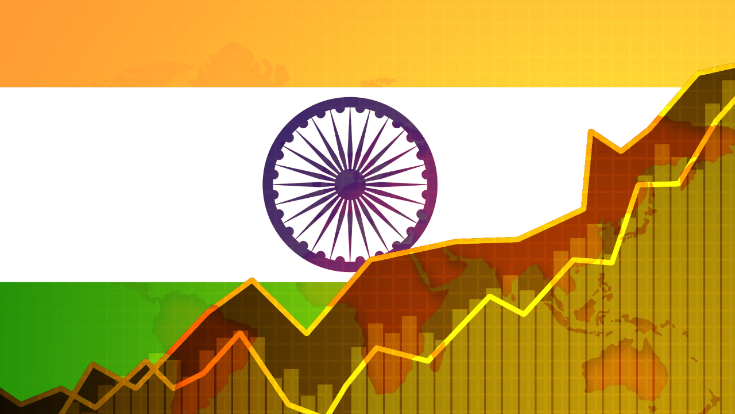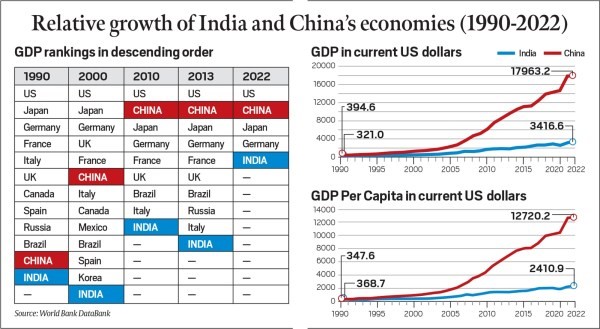





Disclaimer: Copyright infringement not intended.
Context
Background
China's Economic Transformation:
1990 vs. 2022:
China's Dominance:

India's Growth Trajectory:
Comparative Growth:
Challenges Faced:
Focus on Per Capita GDP:
Importance of Per Capita GDP:
Note: GDP per capita is the sum of gross value added by all resident producers in the economy plus any product taxes (less subsidies) not included in the valuation of output, divided by mid-year population.
Growth Potential:
|
Factors Affecting GDP Per Capita Population Growth: Population growth significantly impacts GDP per capita, as it is the denominator in the calculation. High population growth can lower GDP per capita, especially if it outpaces economic growth. For instance, despite a high population figure, the United States maintains a high GDP per capita due to robust economic growth. Economic Geography: Geographic location influences productivity and trade links, impacting GDP per capita differently. Proximity to similar industries can enhance productivity through efficient resource utilization and reduced supply chain costs. Regional trade treaties, like those in the European Union or ASEAN, facilitate economic growth within the same geography. Transparency: Democracies and transparent judicial systems correlate with higher GDP per capita due to reduced corruption and lower business costs. Countries with transparent systems foster more citizen trust in their economies, promoting growth. Level of Education: Education levels of citizens affect GDP per capita, with countries boasting higher levels of postsecondary education experiencing higher per capita GDP. For instance, citizens with education beyond high school contributed significantly to GDP growth in countries like France, Norway, Switzerland, and the UK. Is Per Capita GDP a Useful Indicator? Per capita GDP serves as an indicator of a country's citizens' standard of living, assessing the impact of GDP on individuals. It provides a more accurate measure than GDP alone, reflecting the effectiveness of economic policies in distributing monetary gains. However, per capita GDP has limitations, including reliance on traditional GDP definitions that overlook technological advancements, automation, and climate change. These factors can affect employment levels and overall productivity, influencing per capita GDP. Additionally, non-inclusion of activities like entertainment and travel in GDP calculations and the inability to accurately measure income inequality are notable criticisms of per capita GDP. |
Government Targets and Aspirations:
India's Development Goals:
Path to Development:
|
PRACTICE QUESTION Q. Discuss the merits and demerits of India shifting its economic focus from aggregate GDP growth to per capita GDP growth as the primary measure of economic development. Assess the potential implications of such a transition on various sectors of the economy and the overall well-being of its citizens. |











© 2025 iasgyan. All right reserved